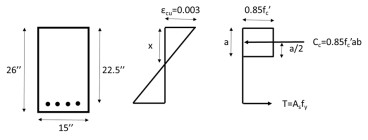Protective structures
Protective structures are constructions designed with the primary purpose of shielding occupants, assets, or infrastructure from a variety of threats, risks, and adverse conditions. These structures are constructed to provide a barrier against external forces such as natural disasters, impacts, explosions, fire and chemical hazards, among others. Protective structures come in diverse forms and applications, each tailored to address specific challenges. They range from blast-resistant buildings used in hazardous industrial environments to hurricane-resistant shelters safeguarding communities from powerful storms. In other words, protective structures play a pivotal role in safeguarding lives, properties, and critical infrastructure, in a world increasingly exposed to various risks, highlighting the symbiosis between technology, innovation, and the well-being of the communities.
Want to read more like this?

How advanced finite element analysis can prepare buildings for extreme events
Nov, 14, 2024 | NewsWhile most structural analysis software can evaluate everyday stresses, they often fail to prepare...
Earthquake Engineering
Jan, 01, 2019 | EducationEarthquake engineering is a critical field of civil engineering that focuses on the analysis, desi...
Soil structures
Sep, 07, 2023 | EducationSoil structures refer to constructions that involve the use of soil as a fundamental building mate...
Temporary structures
Sep, 07, 2023 | EducationTemporary structures are constructions designed and erected for short-term use, often to serve a s...
Roofs
Sep, 14, 2023 | EducationRoofs refer to the uppermost covering or envelope of a building or structure that provide protectio...
Connections and joints
Sep, 14, 2023 | EducationConnections and joints refer to the critical elements in structural systems that serve as the link...
Structural control
Sep, 07, 2023 | EducationStructural control refers to the application of various techniques to mitigate and manage the vibr...
Structural stability
Sep, 16, 2022 | EducationStructural stability is the ability of a structure to maintain its shape and resist deformation or...
Structural loads
Sep, 07, 2023 | EducationStructural loads refer to the forces, pressures, and other external actions that act upon a struct...
Trending

Diaphragms

Nominal flexural strength of a reinforced concrete beam

Calculate the Maximum Shear Stress

Truss deflection using the unit load method

Overhanging beam: shear force and bending moment calculation

Calculation Example – Beam with inner hinge (Part A). Find the Reactions

Method of sections

